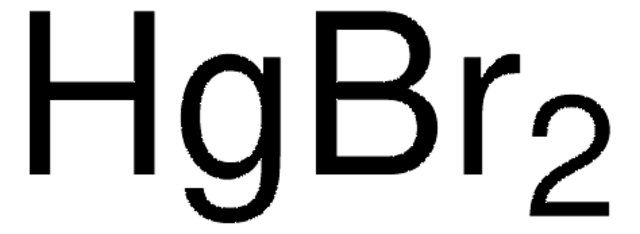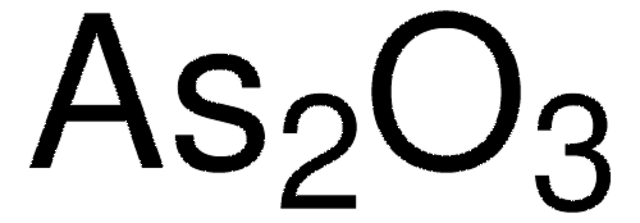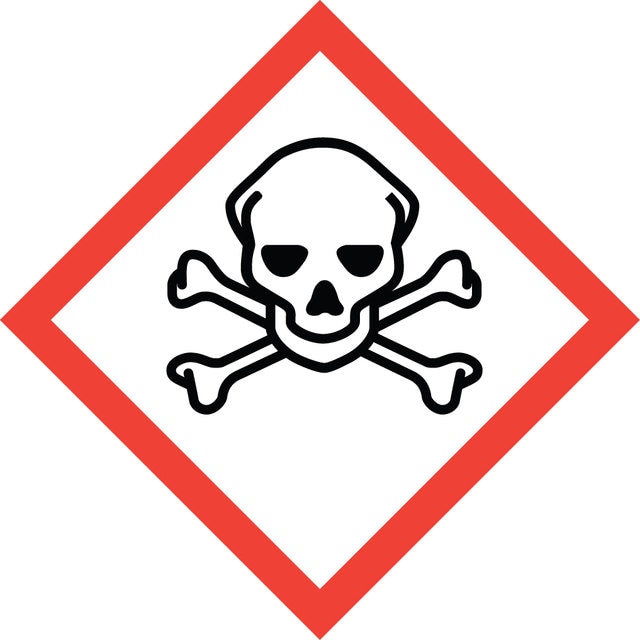추천 제품
Grade
ACS reagent
Quality Level
vapor pressure
1 mmHg ( 136.5 °C)
grade
puriss. p.a.
분석
≥99.0% (precipitation titration)
양식
powder or crystals
무기 잔류물(산화 후)
≤0.02%
bp
322 °C (lit.)
mp
236 °C (lit.)
음이온 미량물
chloride (Cl-): ≤2000 mg/kg
sulfate (SO42-): ≤50 mg/kg
양이온 미량물
Ca: ≤10 mg/kg
Cd: ≤5 mg/kg
Co: ≤5 mg/kg
Cr: ≤5 mg/kg
Cu: ≤5 mg/kg
Fe: ≤5 mg/kg
K: ≤50 mg/kg
Mg: ≤5 mg/kg
Mn: ≤5 mg/kg
Na: ≤50 mg/kg
Ni: ≤5 mg/kg
Pb: ≤5 mg/kg
Zn: ≤5 mg/kg
SMILES string
Br[Hg]Br
InChI
1S/2BrH.Hg/h2*1H;/q;;+2/p-2
InChI key
NGYIMTKLQULBOO-UHFFFAOYSA-L
유사한 제품을 찾으십니까? 방문 제품 비교 안내
관련 카테고리
일반 설명
신호어
Danger
유해 및 위험 성명서
Hazard Classifications
Acute Tox. 1 Dermal - Acute Tox. 1 Inhalation - Acute Tox. 2 Oral - Aquatic Acute 1 - Aquatic Chronic 1 - STOT RE 2
Storage Class Code
6.1B - Non-combustible acute toxic Cat. 1 and 2 / very toxic hazardous materials
WGK
WGK 3
Flash Point (°F)
Not applicable
Flash Point (°C)
Not applicable
가장 최신 버전 중 하나를 선택하세요:
자사의 과학자팀은 생명 과학, 재료 과학, 화학 합성, 크로마토그래피, 분석 및 기타 많은 영역을 포함한 모든 과학 분야에 경험이 있습니다..
고객지원팀으로 연락바랍니다.










